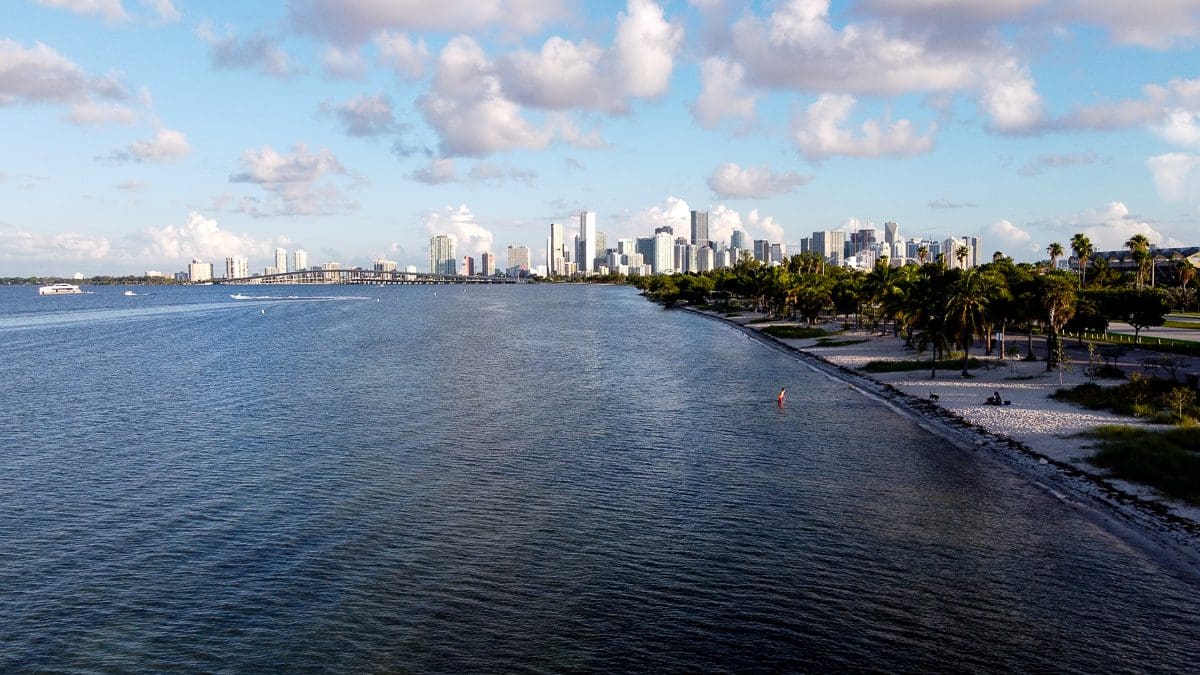Miami-Dade officials released the 2024 Biscayne Bay Report Card, and the indications about the health of the Bay are disappointing at best.
“We have a long way to go to restore the Bay,” said Rachel Silverstein, the executive director of Miami Waterkeeper. “ It’s important to keep focus on and attention on these key water quality issues, as clean water is what makes Miami, Miami.”
The 2024 Biscayne Bay Report Card showed almost no change in the overall health of the Bay, which was already not in the best state.
In the 2024 Report Card, the only improvement is in the area of the Bay known as “SNB-C,” east of Virginia Key, now rated as “Good” – up from “Fair” last year.
All other 11 areas of the Bay have remained unchanged in rating, despite several initiatives and programs aimed at improving Biscayne Bay’s health.
The report card evaluates the ecological health of Biscayne Bay based on the water quality and habitat status. Water quality indicators include nutrients like phosphorus and nitrogen, chlorophyll-a, bacterial growth, and water clarity, while habitat is rated based on growth of aquatic vegetation (seagrass and macroalgae) and sponge growth.
However, water clarity — an important factor for the growth of aquatic vegetation and indicator of dissolved nutrients and gasses — has markedly deteriorated compared to the 2023 report.
The lack of progress isn’t because Miami-Dade officials haven’t tried.
In January 2021, Mayor Daniella Levine Cava appointed the first Chief Bay Officer to recommend and help implement changes regarding Bay health, including improvements for water quality, governance, infrastructure, habitat restoration, and more
Over the last few years, there have also been many initiatives, events, and grant funding all dedicated to elevating the profile of Bay health, and educational programs aimed at teaching the public about the economic and environmental importance of Biscayne Bay.
The report doesn’t explain why efforts have not led to improvement.
Last year, most of the Bay was rated “Fair,” with several areas rating as “Poor” in the far north and south parts of the Bay as well as the Miami River, Wagner Creek Canal, and Coral Gables Canal, among other tributaries.
Notably, there were no areas that were rated as “Good.” The general indication was that the water quality of the entire Bay not only needed to improve, but that it had in fact deteriorated from the previous year.
Also in 2023, aquatic vegetation for habitat was considered “Good” in most of the Bay; however, on the coastal area along South Miami, it was indicated as “Fair” and the north part of the Bay west of Miami Beach was “Poor.”
This area in particular has shown significant reduction in aquatic vegetation over time. This is a widespread issue in many parts of the state – affecting the survival of animals like manatees that rely entirely on seagrass for their diet.
Due to this extensive loss of seagrass, the FWC implemented an experimental manatee feeding program during winter months for two years because more than 1,000 manatees had starved to death in 2021. The program was suspended in winter 2023 while officials monitor the situation to determine next steps.
Changes in the health of Biscayne Bay contribute to more than just the health and wellbeing of the environment and the animals that live there.
“Biscayne Bay brings $64 billion to the Miami economic output annually, it’s home to a dozen threatened and endangered species, and it’s the cultural and recreational heart of our community,” Silverstein said.
In 2022 and 2023, Miami-Dade County partnered with the South Florida Water Management District to update a previous 10-year-old study on the economic importance of Biscayne Bay. They determined that Bay-related activities accounted for $64 billion (or 19%) of the County’s economy.
SNB-C, the only area rated “Good” in the 2024 report for overall health of the Bay, receives tidal flushing from the Atlantic Ocean, which can help to dilute pollutants found in that particular area. This may have helped in improving the water quality more than any legislative or physical cleaning efforts done by the County or other organizations, meaning that the “Good” rating may be a natural change rather than an indication of improving health.
In memo, Mayor Levine Cava wrote: “Biscayne Bay and the tributaries, canals, and groundwater that feed it are facing unprecedented threats to their health and resilience,” continuing aggressive short- and long-term actions are needed to restore the health of the Bay.

Rumya Sundaram
RUMYA SUNDARAM is the environmental editor of the Key Biscayne Independent. She is also the director of environmental science for the Key Biscayne Community Foundation.


